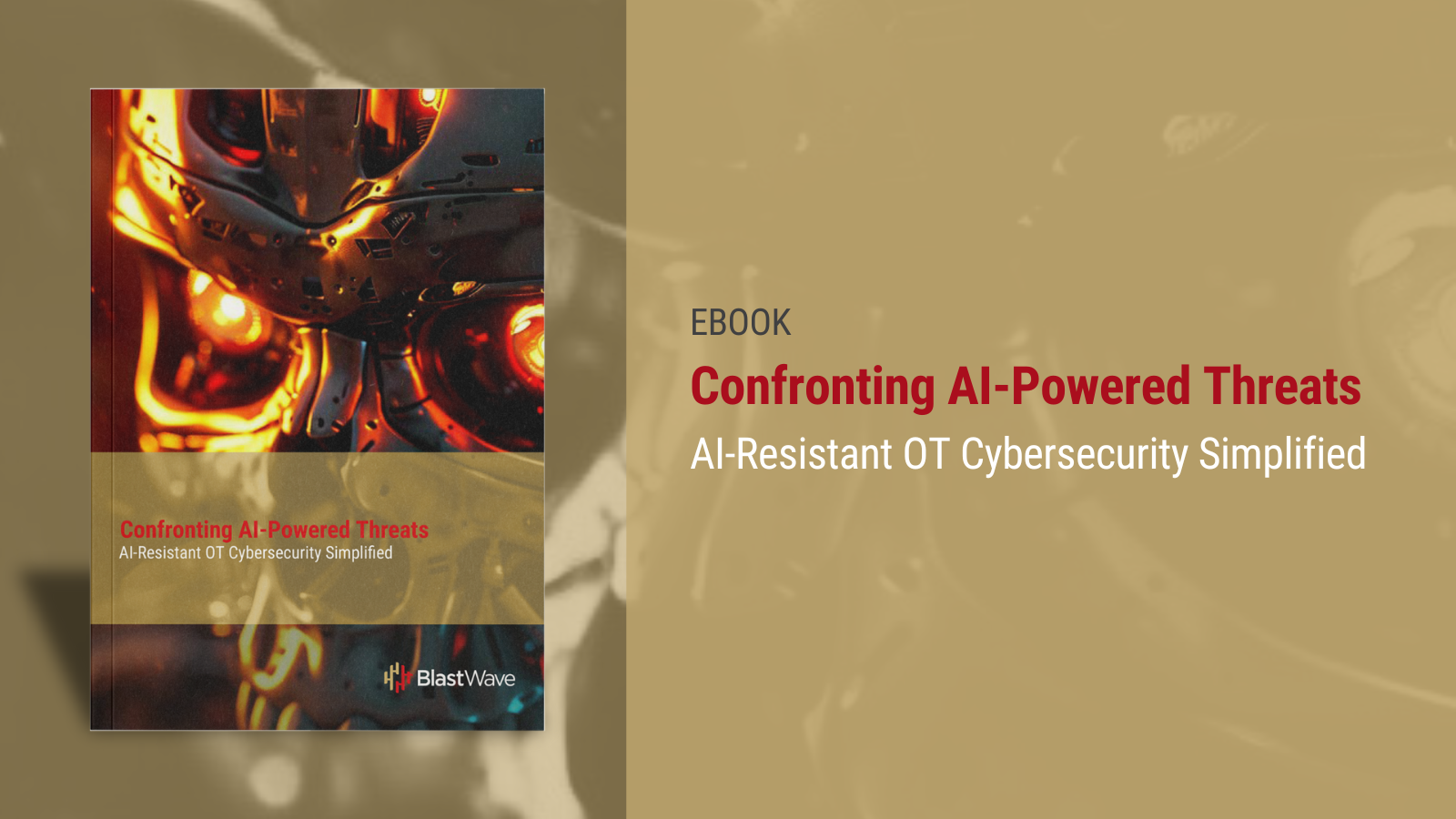The AI Paradox: Why Adding AI-Powered Defense Is Actually Making Your OT Systems Less Secure
For executives responsible for Operational Technology (OT) and critical infrastructure, the rise of Artificial Intelligence presents a fundamental contradiction. On one hand, AI is driving the most sophisticated cyber threats the world has ever seen—automating reconnaissance, accelerating attack speeds, and increasing the scale of disruption. On the other, the primary industry response of deploying more AI-driven detection tools is failing to deliver real security. Instead, it’s overwhelming human teams and wasting millions annually.
Watch our webinar, The Invisible OT: How to Build a Complete Asset Inventory & “Virtual Air Gap” for Legacy Systems, to learn how forward-looking leaders are resolving this contradiction through pragmatic, low-friction preemption.
Welcome to the AI Paradox. Resolving it begins by shifting focus from noisy, expensive detection to proactive invisibility and simplified Zero Trust protection.
The AI-Powered Offensive Leap
Cyber adversaries are no longer relying on slow, manual methods of network probing. They are leveraging AI and automation to scale attacks across vast landscapes of connected industrial control systems (ICS) and SCADA platforms.
The goal is no longer just data theft; it’s operational disruption and physical damage. The appearance of advanced threats like this proves the point:
- FrostyGoop: Malware designed to disrupt heating systems, which targets technology used by tens of thousands of internet-enabled industrial control system devices globally.
- PIPEDREAM: The first known ICS malware with the ability to scale attacks across multiple systems and sectors, posing a severe threat to diverse critical infrastructure.
The MITRE ICS AT&CK framework identifies Discovery and Initial Access as the most significant external threats. AI excels precisely in these areas, automating massive-scale reconnaissance to locate and probe exposed OT systems rapidly. If an attacker’s automated tools can see the industrial system, the attack is already underway.
The Paradox of Detection: Drowning in False Positives
In response to these escalating threats, many organizations invest heavily in AI-driven Security Information and Event Management (SIEM) and Extended Detection and Response (XDR) tools. The intended outcome is better threat intelligence; the frequent reality is alert fatigue.
The fundamental flaw is that relying on detection strategies (which try to find threats after they have gained entry) generates an unmanageable cascade of false positives. This noise has quantifiable human and financial costs:
- Alert Fatigue and Burnout: A study by Trend Micro found that 70% of security teams feel overwhelmed by the sheer volume of excessive alerts. When security analysts are forced to sift through thousands of irrelevant notifications, burnout becomes inevitable, leading to the dangerous practice of auto-dismissing alerts, an open invitation for genuine threats to slip through the gaps.
- Wasted Capital: This inefficiency directly impacts the bottom line. Research from Gartner estimates that organizations waste millions annually chasing false alarms. This misuse of resources reduces the capacity of security teams to respond effectively to actual crises.
Furthermore, AI threat detection is inherently resource-intensive, often requiring vast amounts of high-quality data that can be difficult or impossible to obtain in diverse brownfield OT environments. The effort to detect more threats is simultaneously diminishing the capacity of human analysts to manage the threats that matter.
The Smart AI Pivot: From Detection to Preemption
The only way to resolve the AI Paradox in critical infrastructure is to move away from relying on complex, noise-generating detection and adopt a strategy of preemptive security. If AI-powered attacks excel at discovery and initial access, a successful defense builds on invisibility and denial of access.
This pivot is achieved by strategically implementing Protection that is purpose-built for OT environments.
1. Neutralize Reconnaissance with Network Cloaking
The most effective way to block AI-enhanced reconnaissance is to render the OT network invisible. Network Cloaking technology ensures that critical OT systems remain invisible to unauthorized scans or probes. This approach fundamentally shifts the defensive advantage: if the adversary’s automated tools cannot discover or reach the internal network workings, the initial access phase of the attack is neutralized entirely. It frustrates the core mechanism of modern AI-driven attacks, dramatically reducing the threat surface before a single alert is ever generated.
2. Stop Lateral Movement with Simplified Segmentation
If a threat actor bypasses the initial defenses (or enters through an IT entry point, which is increasingly common due to the convergence of IT and OT), the priority must be containment. Traditional segmentation often fails in this context, relying on complex firewall rules that are difficult to manage in dynamic industrial environments. Preemptive Zero Trust addresses this by implementing Software-Defined Microsegmentation to create granular secure zones. Access is strictly limited to the principle of least privilege, ensuring that even if one segment is compromised, the attacker cannot pivot laterally into critical ICS or SCADA systems to inflict damage.
Quantifying the Value of Preemption: A $4.8 Million Case Study
Boards and CEOs must justify the investment in preemptive Zero Trust in financial terms. New ROI models like Return on Mitigation (ROM) and Return on Security Investment (ROSI) provide the necessary financial metrics. Consider a large manufacturing plant that experienced a severe, swift-moving cyber attack. The sophisticated attack spread quickly across the interconnected IT/OT network, disabling production lines and bringing the entire factory to a complete standstill. The downtime quickly became catastrophic: the rest of the factory sat idle for over two days, accumulating financial losses estimated at over $4.8 million.
However, one section of the plant remained fully operational, continuing to run as normal. This crucial segment implemented two key Zero Trust functions:
- Cloaking: The critical OT systems in this segment were undiscoverable, preventing the attacker from discovering and compromising them.
- Segmentation: The ZT solution blocked the attacker's ability to move laterally from the compromised IT segments into the protected OT segments, containing the breach.
This small-scale deployment provided empirical proof that the investment in preemptive invisibility and simplified segmentation averted massive business continuity losses, demonstrating a superior ROM compared to systems that rely on detection alone.
Conclusion: The Mandate for Invisibility
The AI Paradox confirms that the security status quo is unsustainable. Relying on detection models that generate an avalanche of alerts is a failing strategy in the face of AI-accelerated threats.
The path forward for critical infrastructure is to shift decisively to preemptive defense:
- Move Beyond Detection: Stop chasing false positives and focusing resources on post-compromise detection.
- Mandate Invisibility: Secure critical OT systems by adopting solutions that render them invisible to external threats, effectively neutralizing AI-powered reconnaissance tools.
- Simplify Segmentation: Implement non-disruptive, software-defined segmentation to block lateral movement and ensure business sustainability.
By adopting pragmatic, OT-specific Zero Trust Protection that prioritizes preemption and operational continuity, organizations can finally emerge stronger, making security a quantifiable strategic asset rather than a constantly overwhelmed cost center.
Don’t forget to register for our webinar next week: The Invisible OT: How to Build a Complete Asset Inventory & 'Virtual Air Gap' for Legacy Systems at:
https://us02web.zoom.us/webinar/register/WN_YkZB_5vsTqmh28uUsOrUeg
Experience the simplicity of BlastShield to secure your OT network and legacy infrastructure.

.jpg)








.svg)